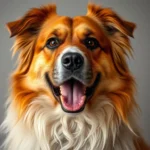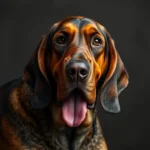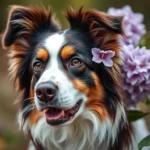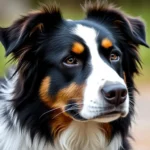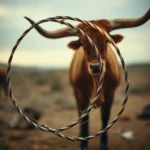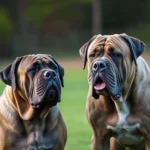
Introduction
Coonhounds are a remarkable group of dog breeds that are primarily known for their exceptional hunting skills and friendly demeanor. With a rich history dating back to their origins as hunting companions in the United States, these dogs have earned a special place in the hearts of many dog lovers. Understanding the various types of Coonhounds not only helps potential owners choose the right breed for their lifestyle but also fosters a greater appreciation for these versatile canines.
History of Coonhounds
Origins of Coonhounds
The history of Coonhounds can be traced back to the early 19th century in the United States. Bred primarily for their ability to hunt raccoons and other small game, these dogs were developed from a blend of various hound breeds, including Bloodhounds and Foxhounds. The early settlers recognized the need for a skilled hunting dog that could track, tree, and retrieve game, particularly in the dense forests of the American South.
Development of Different Breeds
As hunting practices evolved and regional preferences emerged, different types of Coonhounds began to take shape. Breeders focused on enhancing specific traits such as scenting ability, endurance, and temperament, resulting in the development of distinct breeds. This selective breeding has contributed to the variety we see today, with each type of Coonhound possessing unique characteristics that cater to different hunting styles and family settings.
Overview of Coonhound Breeds
General Characteristics of Coonhounds
Coonhounds are typically medium to large-sized dogs with a well-defined musculature. They possess a short, dense coat that varies in color depending on the breed. Common coat colors include black and tan, blue ticked, and red.
In terms of temperament, Coonhounds are known for their friendly and outgoing personalities. They tend to be good with children and can adapt well to family life, although they thrive in environments where they receive ample physical activity and mental stimulation.
Common Uses of Coonhounds
Primarily, Coonhounds are used for hunting and tracking due to their keen sense of smell and determination. They excel in hunting raccoons, but their skills are also applicable to various other game. Beyond their hunting prowess, many Coonhounds make excellent companions and family pets, thanks to their gentle and loyal nature.
Types of Coonhounds
Black and Tan Coonhound
The Black and Tan Coonhound is one of the most recognizable types of Coonhounds, characterized by its striking black and tan coat. This breed is known for its strong build and long ears, which enhance its scenting abilities.
In terms of temperament, Black and Tan Coonhounds are friendly and affectionate, making them suitable for family life. They are known to be good with children and can adapt to various living situations. However, they require regular exercise to maintain their health and happiness, as they have high energy levels and a strong hunting drive.
Bluetick Coonhound
With its distinctive blue-ticked coat, the Bluetick Coonhound stands out among other Coonhound types. This breed has a unique appearance, featuring a white base coat with dark blue spots.
Bluetick Coonhounds are known for their playful and friendly personalities. They thrive in active environments and enjoy spending time with their families. They excel in various activities, including hunting, tracking, and participating in dog sports. Their adaptability makes them great companions, but they do require consistent training and socialization to ensure well-rounded behavior.
Treeing Walker Coonhound
The Treeing Walker Coonhound is often regarded as one of the best hunting dogs due to its incredible speed and agility. This breed is predominantly white with black and tan markings, making it visually appealing as well.
Treeing Walkers are known for their intelligence and eagerness to please, which makes training relatively straightforward. They have a strong prey drive and enjoy being active, so they require regular exercise to channel their energy positively. This breed is well-suited for families who can provide ample activity and mental stimulation, as they thrive in engaging environments.
American English Coonhound
The American English Coonhound is recognized for its distinctive coloration, typically featuring a predominantly white coat with red or black patches. This breed is known for its endurance and ability to work long hours in the field.
Socialization and exercise are essential for the American English Coonhound. They are friendly and outgoing, making them great companions for families, but they can become bored and destructive if not adequately stimulated. Training should be consistent and positive, as this breed responds well to encouragement and rewards.
Redbone Coonhound
The Redbone Coonhound is known for its striking red coat and athletic build. This breed is often praised for its versatility in hunting and retrieving game.
Redbones are friendly and affectionate, making them excellent family pets. They require regular exercise and thrive in active households. Their intelligence makes them relatively easy to train, but consistent and positive reinforcement is key. This breed is known for its loyalty and can become quite attached to its family members.
Plott Hound
The Plott Hound is unique among Coonhounds due to its distinct lineage, originating from Germany. Known for their brindle coat, they are powerful and agile hunters.
Plott Hounds are known for their tenacity and strong work ethic, making them exceptional hunting companions. They require plenty of physical activity and mental challenges to keep them engaged. Their affectionate nature allows them to bond closely with their families, but they may require more socialization due to their strong prey drive.
Caring for Coonhounds
Grooming Needs
Grooming needs vary among different types of Coonhounds, but most have short coats that are relatively easy to maintain. Regular brushing helps remove loose hair, dirt, and debris. Bathing should be done as necessary, ensuring that the dog’s coat remains clean and healthy.
Training and Socialization
Training and socialization are crucial for all Coonhound breeds. Obedience training should begin early, as these dogs can develop stubborn tendencies if not properly guided. Socialization with other dogs, pets, and people is equally important to ensure they grow into well-adjusted adults.
Health Considerations
Like all dog breeds, Coonhounds are prone to certain health issues, including hip dysplasia, ear infections, and obesity. Regular veterinary check-ups and preventative care are essential for maintaining their health. Providing a balanced diet, exercise, and routine health screenings can significantly contribute to a long and healthy life.
Choosing the Right Coonhound for Your Lifestyle
Factors to Consider
When selecting a Coonhound, consider factors such as activity level, living conditions, and family dynamics. Each breed has different exercise needs and can vary in their adaptability to apartment living versus a larger home with a yard.
Matching Personality with Lifestyle
Understanding the personality traits of various types of Coonhounds can help you find the right fit for your family. For instance, breeds like the Treeing Walker may require more exercise and outdoor space, while others, like the Black and Tan, can be more adaptable to different living environments. Assessing your time and commitment will help ensure a successful and fulfilling relationship with your Coonhound.
Conclusion
Understanding the types of Coonhounds is vital for anyone considering adding one of these remarkable dogs to their family. Each breed has its unique characteristics, making them suitable for various lifestyles and family dynamics. Whether you are drawn to the hunting capabilities, the affectionate nature, or the striking appearances of these breeds, Coonhounds can make loving companions for those who are willing to meet their needs and provide them with the care they deserve.


